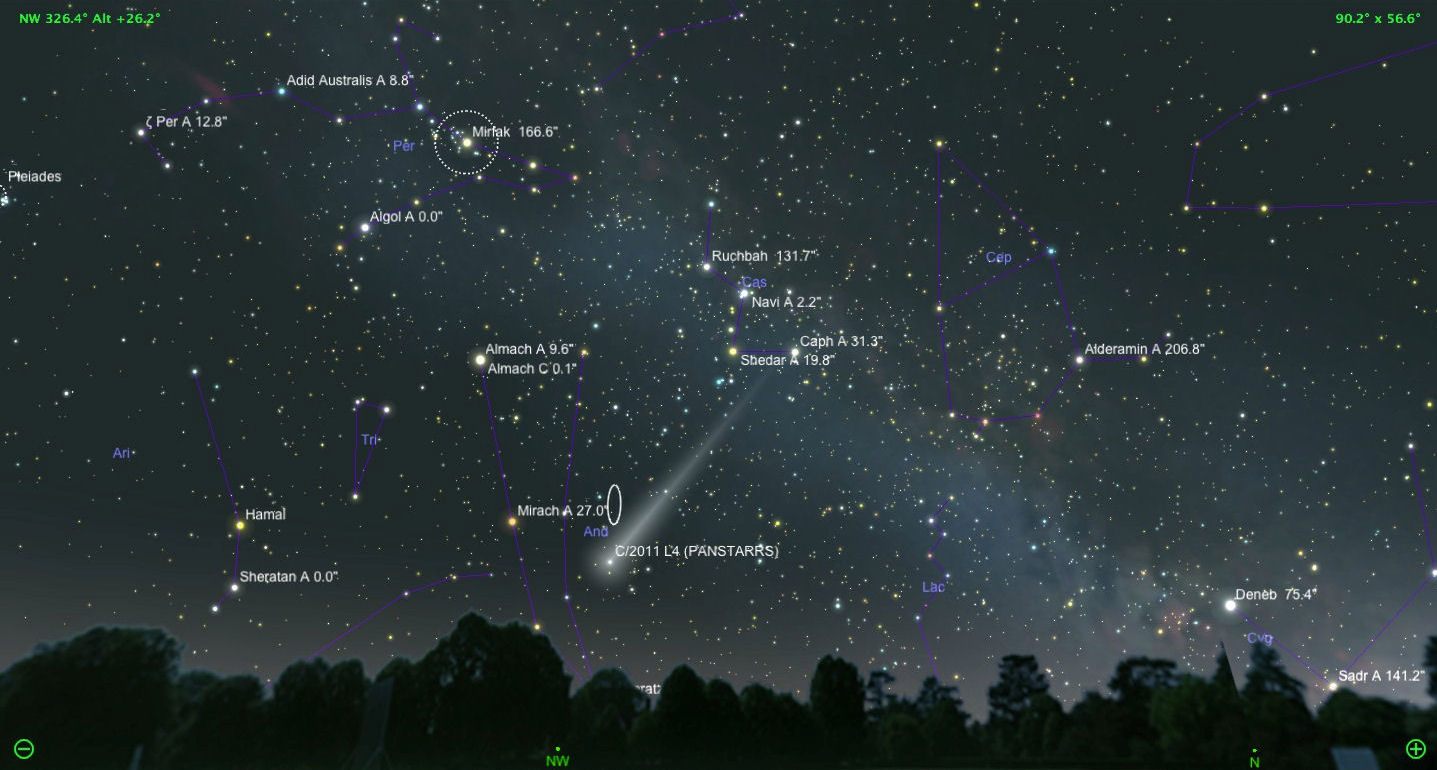Comets are like cats; they have tails, and they do precisely what they want.

March 5, 2013. Comet PANSTARRS passes closest to EArth at 1.10 Astronomical Units, (AU). One AU equals one Earth-sun distance, about 93 million miles or 150 million kilometers.
March 10. The comet passes closest to the sun - as close as our sun's innermost planet, Mercury - at 0.30 AU. Comets are typically brightest and most active around the time they are closest to the sun.
Throughout March 2013. The comet should be visible in the Northern Hemisphere evening sky low in the west after sunset. It will higher each night during March 2013 as it moves from being in front of the constellation Pisces to being in front of the constellations Pegasus and Andromeda. At this time, the comet might have bright dust tail, visible to the unaided eye.
April 2013. The comet will be fading as it moves away from the sun and back out into the depths of space. But it will be located far to the north on the sky's dome and will be circumpolar for northerly latitudes in the Northern Hemisphere, or visible somewhere in the north throughout the night. What's more, the comet will be near in the sky to another beautiful and fuzzy object in our night sky, the Andromeda Galaxy (M31), the nearest large spiral galaxy to our Milky Way.
By the way, Comet PANSTARRS is considered a non-periodic comet. It probably took millions of years to come from the great Oort comet cloud surrounding our solar system. It is, for sure, a once-in-a-lifetime comet
Bottom line: As 2013 begins, there are two comets to get excited about. One is Comet PANSTARRS, which will be brightest in March 2013. The other is Comet ISON, which might become a daylight comet in late 2013. Although a comet's movement in our sky can be predicted, its brightness cannot be. It's too early to know whether Comet PANSTARRS or Comet ISON - the two exciting comets of 2013 - will dazzle or fizzle. But these two are worth watching!



Comment: 'Once-in-a-lifetime comets'? What an anachronism! A quick search through our database clearly tells you that the inner solar system has been liberally sprinkled with comets in recent years!... And at the rate more and more are being discovered and being predicted to be "visible in daylight", like Comet ISON this November, it looks like there are plenty more comets to come...